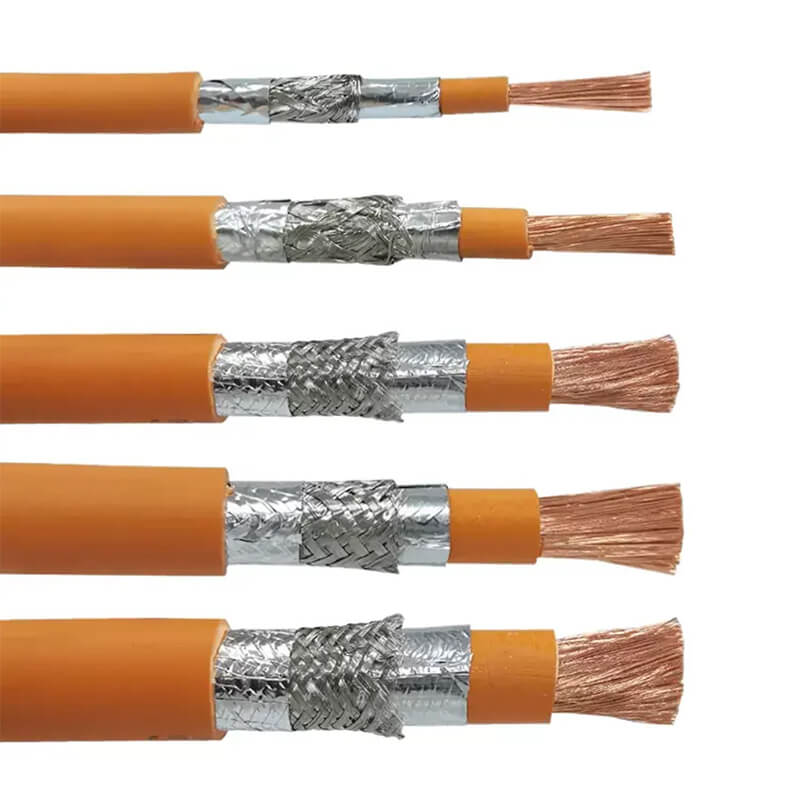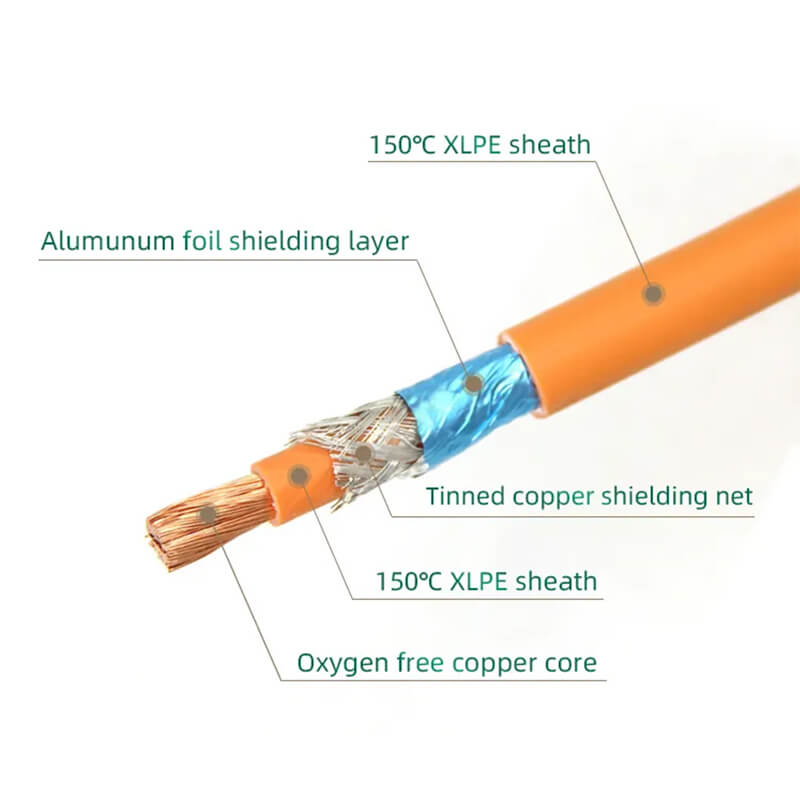 Shielded power cable is a type of electrical cable that has a layer of metal foil or braiding wrapped around the insulation. A Shielded Power Cable is an electrical cable designed with one or more layers of shielding maTerial to protect against electromagnetic interference (EMI) and radio frequency interference (RFI).
Shielded power cable is a type of electrical cable that has a layer of metal foil or braiding wrapped around the insulation. A Shielded Power Cable is an electrical cable designed with one or more layers of shielding maTerial to protect against electromagnetic interference (EMI) and radio frequency interference (RFI).
Telecommunications: Shielded power cables are used to connect telecommunications equipment, such as routers and switches.
Industrial: Shielded power cables are used in industrial applications, such as manufacturing and automation.
Medical: Shielded power cables are used in medical applications, such as medical imaging and patient monitoring.
Shielded power cables are available in a variety of sizes and types. The size of the cable is determined by the amount of current that it will carry. The type of cable is determined by the application that it will be used for.
Place of Origin: | DONGGUAN CHINA |
Brand Name: | RUIYI |
Model Number: | EV shield cable |
Type: | insulated |
Size | 16,25,35,50,75,95,120mm² |
Insulation Material | XLPE OR Silicone |
Core: | Single OR Multicore |
Jacket | XLPE OR Silicone |
COLOUR | Black, Red, Orange |
Shield: | Tinned copper mesh+aluminum |
Conductor Material | pure copper tape |
Rated temperature | 150℃ |
Rated voltage | 1500V |
Reference standard | ISO9001,CE,TUV,TS16949 |
MOQ | 500Meters |
To protect the car's electronics from electromagnetic interference (EMI). EMI is a type of interference that can be caused by electrical devices and systems. It can cause noise and distortion in electrical signals, which can lead to problems such as data corruption and equipment malfunction. New energy smart cars have a lot of sensitive electronics, such as battery management systems, motor controllers, and infotainment systems. These electronics are susceptible to EMI, so it is important to shield them from it.
To improve the charging efficiency of the car. Shielded power cables can help to reduce the amount of energy that is lost during charging. This is because the shield helps to prevent EMI from interfering with the charging process.
To increase the safety of the car. Shielded power cables can help to reduce the risk of fire and other electrical hazards. This is because the shield helps to prevent EMI from causing sparks or other electrical disturbances.

Shielded power cables offer several advantages in various applications.
Electromagnetic Interference (EMI) and Radio Frequency Interference (RFI) Protection:
Reduction of Interference: Shielded cables are designed to minimize electromagnetic interference and radio frequency interference. The shielding helps contain the electrical signals within the cable, preventing them from radiating and interfering with nearby electronic devices or systems.
Signal Integrity:
Enhanced Signal Quality: The shielding helps maintain the integrity of signals by preventing external electromagnetic and radio frequency disturbances from affecting the transmitted signals. This is particularly important in applications where signal quality is critical, such as in data transmission or audio/video applications.
Grounding and Noise Reduction:
Grounding Capability: The shield in a power cable can be grounded, providing a path for unwanted currents and reducing the risk of electrical noise. Proper grounding helps to maintain a stable electrical environment and reduce the potential for ground loops.
Environmental Protection:
Mechanical Protection: Shielding adds an extra layer of protection to the conductors, guarding them against physical damage, abrasion, and environmental factors. This can be especially important in industrial or outdoor settings where cables may be subjected to harsh conditions.
Safety and Compliance:
Compliance with Regulations: Shielded cables are often designed and manufactured to meet specific safety and regulatory standards. This ensures that they comply with industry requirements and contribute to the safety of the electrical systems in which they are used.
Longer Lifespan:
Durability: The added protection provided by the shielding can contribute to a longer lifespan for the cable by reducing wear and tear over time. This is particularly advantageous in applications where cables may be subjected to frequent movement or harsh environmental conditions.
Reduced Cross-Talk:
Minimized Cross-Talk: Shielding helps minimize cross-talk, which is the unwanted transfer of signals between adjacent conductors. This is especially important in applications where multiple cables are routed closely together, such as in data centers or industrial settings.
Wide Range of Applications:
Versatility: Shielded power cables are versatile and can be used in various applications, ranging from industrial machinery to audio/video systems and computer networks.
FAQ:
The shielding acts as a barrier, redirecting or absorbing unwanted interference and preventing it from affecting the electrical signals or power within the cable.
Yes, common shielding materials include foil, braided wire, or a combination of both, each offering varying levels of protection.
Yes, some Shielded Power Cables are designed for outdoor use and are constructed with materials that provide resistance to environmental factors.
Shielded Power Cables have an added layer of shielding to protect against interference, whereas unshielded cables do not have this additional protection.
Termination involves using compatible connectors and ensuring that the cable's shielding is correctly grounded to maintain its effectiveness.
Installation: Shielded power cables can be more difficult to install than unshielded power cables.
Overall, shielded power cables are a valuable tool for applications where EMI is a concern. They can help to improve the performance, reliability, and safety of electrical equipment.